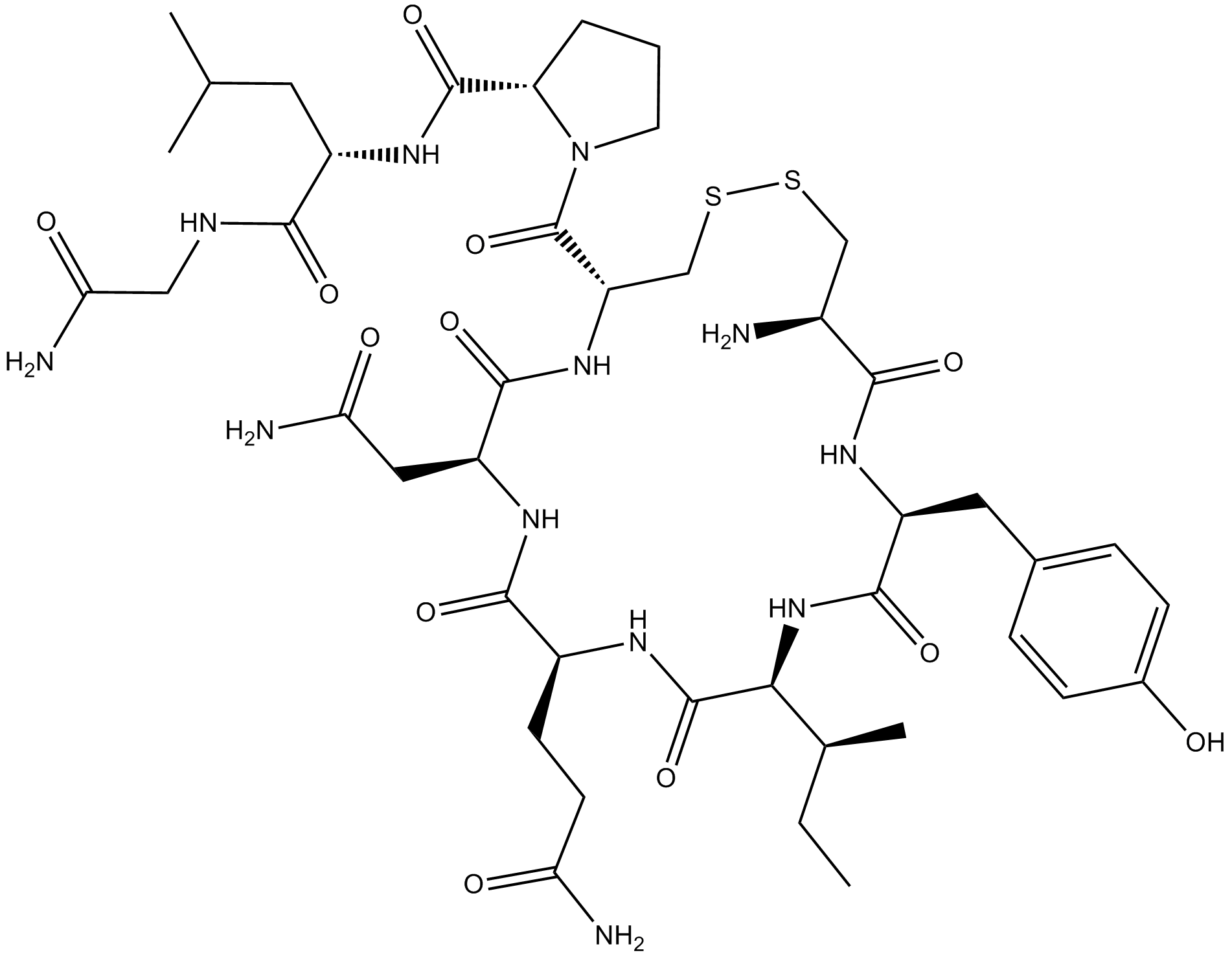Oxytocin |
| Catalog No.GC16222 |
mammalian neurohypophysial hormone
Products are for research use only. Not for human use. We do not sell to patients.

Cas No.: 50-56-6
Sample solution is provided at 25 µL, 10mM.
Oxytocin (α-Hypophamine) is a mammalian neurohypophysial hormone; its actions are mediated by specific, high-affinity oxytocin receptors; ligand of oxytocin receptor.
References:
[1]. Oxytocin, From Wikipedia
Review for Oxytocin
Average Rating: 5 (Based on Reviews and 20 reference(s) in Google Scholar.)
Review for Oxytocin
GLPBIO products are for RESEARCH USE ONLY. Please make sure your review or question is research based.
Required fields are marked with *




















